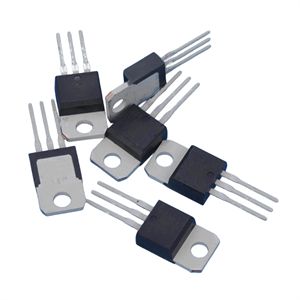Date:2024-10-11 Categories:Product knowledge Hits:341 From:Guangdong Youfeng Microelectronics Co., Ltd
Surface mounted rectifier diodes generate heat during operation, and excessive heating can accelerate their service life. Therefore, the cooling system of rectifier diodes is developed. So what is the cooling principle of surface mount rectifier diodes?
What is the working principle of a chip rectifier diode refrigeration system? This effect was created by J. in 1834 A. C Peltier first discovered that when a circuit composed of two different conductors A and B is connected to direct current, in addition to Joule heat, some other heat is released at the joint, while the other joint absorbs heat. This phenomenon caused by the Peltier effect is reversible. When the direction of the current is changed, the joints that release heat and absorb heat also change accordingly. The heat absorbed and released is proportional to the current intensity I [A] and is related to the properties of the two conductors and the temperature of the hot end, that is: Qab=I π ab
We call this calculation formula the relative Peltier coefficient between conductors A and B, with the unit of [V]. When π ab is positive, it represents heat absorption, and vice versa, it represents heat release. Since heat absorption and release are reversible, π ab=- π ab
Of course, the magnitude of the Peltier coefficient depends on the properties of the materials that make up the closed circuit and the junction temperature. Its value can be obtained from the Seebeck coefficient α ab [V.K-1] and the absolute temperature T [K] at the junction, which gives π ab=α abT. The Peltier system also has additivity, that is, Qac=Qab+Qbc=(π ab+π bc) I

Previous: Classification, Structure, and Principle of MOSFET
Next: Using voltage inspection method to quickly locate fault points in integrated circuits